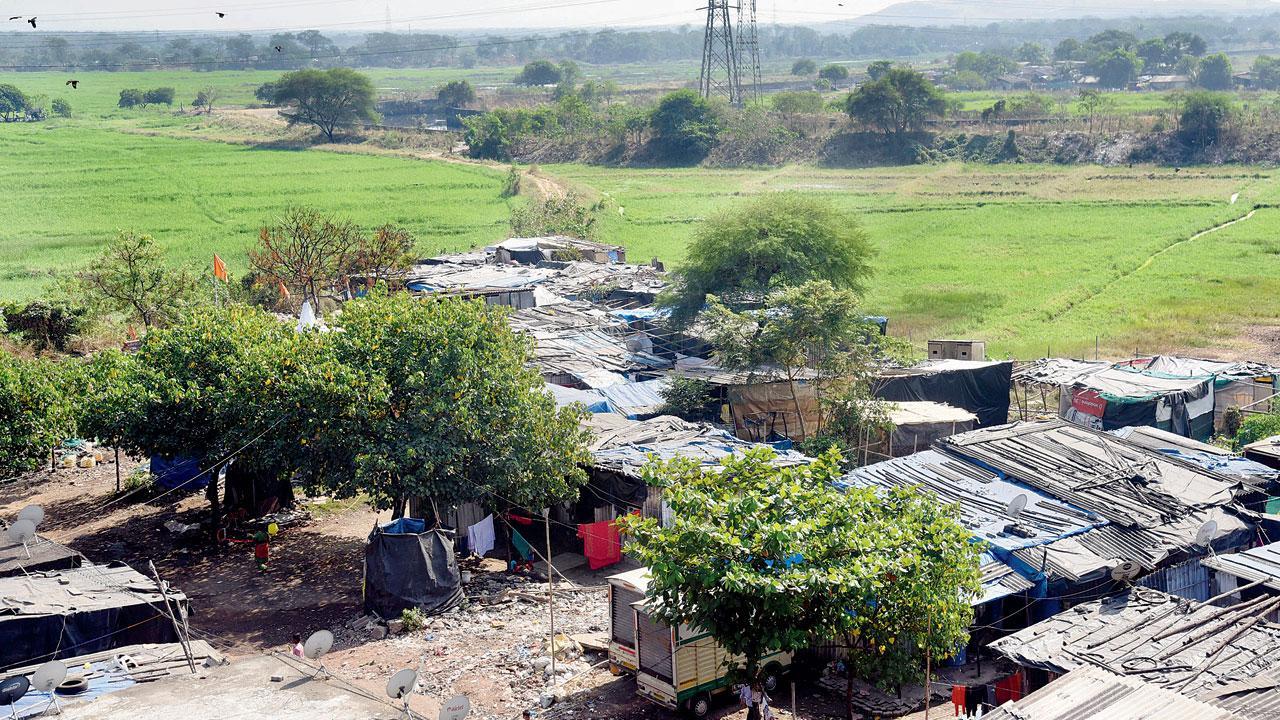Mangroves Protection Committee and key stakeholders finalise dos and don’ts in 4.5-hour meet, also decide on setting up CCTV cameras, mapping mangroves and monitoring them using satellite images

Encroachments on mangroves between Nahur and Bhandup east Private landowners will face penalties and criminal charges for any damage to mangroves present on their property. File Pic/Sameer Markande
The Mangrove Dos and Don’ts list is finally ready. In a four-and-a-half-hour meeting on Tuesday, the Mangroves Protection Committee decided on the protocol in case of mangrove damage, and finalised directives for local entities on the collection of debris and mud dumped in mangroves.
ADVERTISEMENT
The meeting took place under the chairmanship of Konkan Divisional Commissioner Dr Mahendra Kalyankar on Tuesday. Kalyankar said that special efforts should be made to protect mangrove forests by coordinating with government agencies and immediately addressing complaints.
Additional Principal Chief Conservator of Forests (APCCF) and head of the mangrove cell, SV Ram Rao, was also present through video conference. Also present were senior officials from other departments including Maharashtra Pollution Control Board and police, and environmentalist Stalin D.
Stalin D said that issues related to transferring mangrove forest areas to the Forest Department were also discussed in the presence of the nodal officers. “Crucial decisions on protocol to be followed in case of mangrove destruction were made. Also, clear instructions have been given to local bodies to clear debris and mud dumped in mangroves. Failure to do so by local bodies will be viewed as contempt and will be brought to the notice of the court.”
Also read: Mumbai: Woman tries to fire cook, gets shock of her life
Other decisions include installing CCTV cameras, preparing maps of mangrove forests in the state, taking high-resolution satellite images of mangrove cover every six months, taking preventive measures if worrying changes are found, and filing criminal complaints and imposing penalties on private landowners to facilitate restoration.
The India State of Forest Report, 2021, states that the mangrove cover in Maharashtra has increased from 320 sq km in 2019 to 324 sq km in 2020 but the Mumbai suburban mangrove cover decreased by 1.08 sq km in 2020 compared to 2019. The Forest Survey of India has been assessing mangrove cover using remote sensing since 1987.
Worldwide mangrove cover
As per the Global Forest Resources Assessment 2020 (FRA, 2020), world over, 113 countries have mangrove forests covering an estimated 14.79 million hectares. The largest mangrove area is reported in Asia at 5.5 million hectares, followed by Africa with 3.24 million hectares, North and Central America with 2.57 million hectares and South America with 2.13 million hectares.
Oceania has reported the smallest area of mangrove which is 1.30 million hectares. More than 40 per cent of the total area of mangroves was reported to be in just four countries — Indonesia having 90 per cent of the total, Brazil having 9 per cent of the total, Nigeria having 7 per cent and Mexico 6 per cent.
In most countries, the mangrove ecosystem faces constant pressure due to the increasing human population in coastal areas and the rising demand for land, timber, fodder, fuel, wood and other non-wood-forest products.
Species of mangroves found in India
Important species of mangrove ecosystem in India include Avicennia alba, Bruguiera cylindrica, heriteravlittoralid, Pheonix pauldosa, morinda citrifolia and ceriops tagal. Sundarbans, located in the northern Bay of Bengal, is the world’s largest single patch of mangrove forest. It is spread over approximately 10,000 square kilometres in Bangladesh and India. Sundarbans is the first mangrove forest in the world which was brought under scientific management as early as 1892.
The current assessment (2021) shows that mangrove cover in the country is 4,992 sqkm which is 0.15 per cent of the country’s total geographical area. Very dense mangrove cover comprises 1,475 sqkm which is 29.55 per cent of the mangrove cover. Moderately dense mangrove is 1,481 sqkm which is 29.67 per cent, while open mangroves constitute an area of 2,036 sqkm which is 40.78 per cent.
According to the survey, there has been a net increase of 17 sqkm in the mangrove cover of the country as compared to the 2019 assessment. The states that show significant gain in mangrove cover are Odisha with 8 sqkm increase and Maharashtra with 4 sqkm increase. In Maharashtra, the increase in mangrove cover was mainly due to natural regeneration.
14.79
Area (in mn ha) of global mangroves
113
No of countries having mangroves
 Subscribe today by clicking the link and stay updated with the latest news!" Click here!
Subscribe today by clicking the link and stay updated with the latest news!" Click here!







